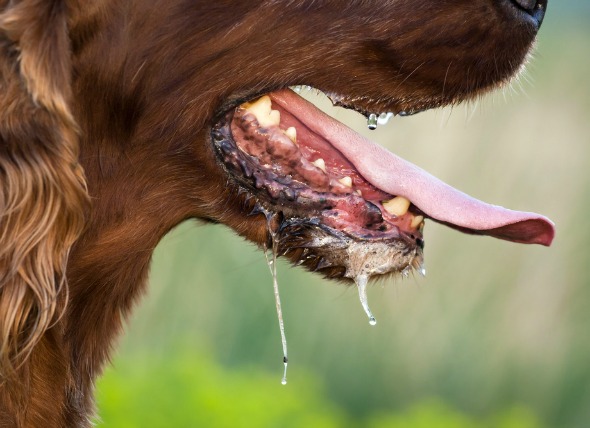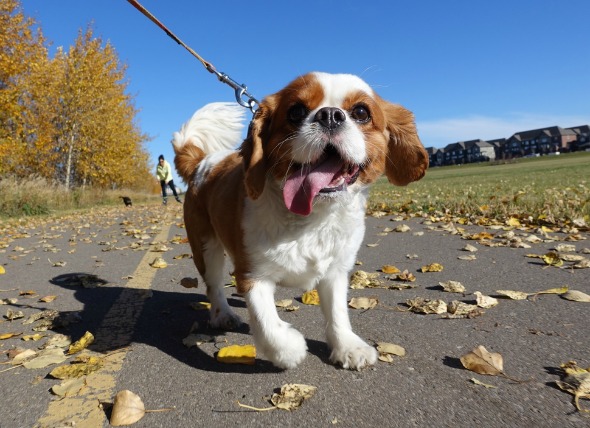
Synovial sarcomas are soft tissue sarcomas – malignant cancers – that arise from the precursor cells outside the synovial membrane of the joints and bursa (the fluid-filled, sac-like cavity between joints that helps to facilitate movement). The synovial membrane itself is the layer of soft tissue that lines the surfaces within the joints.
Precursor cells have the ability to differentiate into one or two closely related forms: epithelial cells (skin cells) or fibroblastic (connective tissue) cells. Therefore, the tumor may have cancer resembling both cancers of the skin and of the connective tissue.
Synovial sarcomas are aggressive and highly locally invasive, spreading in greater than 40 percent of cases. They most often spread to the elbow, knee, and shoulder blade regions. They are more common in large-breed rather than small-breed dogs.
You will need to give a thorough history of your dog's health and onset of symptoms. Your veterinarian will then perform a complete physical exam and order standard laboratory tests, including a biochemical profile, a complete blood count, a urinalysis and an electrolyte panel to rule out other non-cancerous causes for your dog's symptoms.
Visual diagnostic techniques will show abnormalities around the affected joints. X-rays of the mass will show that the tumor is involved in both the bone and the joint. To obtain a definitive diagnosis, a biopsy of the soft and bony tissue of the tumor is necessary for histologic evaluation (microscopic analysis of the tissue sample). Using fine-needle aspirates (removal of fluid), the regional lymph nodes (i.e., the lymph nodes of the groin, armpits) should also be sampled and tested for evidence of metastasis (spread).
The invasiveness of this type of sarcoma makes amputation (if possible) of the affected limb the treatment of choice. When appropriate, the patient should be treated with supportive chemotherapy. Pain medication will also be prescribed and administered as necessary.
After surgery, you should expect your dog to feel sore. Your veterinarian will give you pain medication for your dog to help minimize discomfort, and you will need to set up a place in the house where your dog can rest comfortably and quietly, away from other pets, active children, and busy entryways. Trips outdoors for bladder and bowel relief should be kept short and easy for your dog to handle during the recovery period. Use pain medications with caution and follow all directions carefully; one of the most preventable accidents with pets is overdose of medication.
Your veterinarian will schedule follow-up appointments with you for your dog every two to three months for the first year after diagnosis of the synovial sarcoma. After the first year your dog may be seen by your veterinarian every six months for follow-up exams, and to affirm that the cancer has not recurred. X-rays should be taken at each visit to check for local recurrence and to confirm that the cancer has not spread to the lungs.
 Excessive Production of Saliva in Dogs
Ptyalism in Dogs
Ptyalism is a condition characte
Excessive Production of Saliva in Dogs
Ptyalism in Dogs
Ptyalism is a condition characte
 Glaucoma in Dogs
Disease of the Optic Nerve in Dogs
Glaucoma is a
Glaucoma in Dogs
Disease of the Optic Nerve in Dogs
Glaucoma is a
 Skin Bumps (Papulonodular Dermatoses) in Dogs
Papulonodular Dermatoses in Dogs
Papulonodular de
Skin Bumps (Papulonodular Dermatoses) in Dogs
Papulonodular Dermatoses in Dogs
Papulonodular de
 Anemia Due to Iron Deficiency in Dogs
Anemia, Iron Deficiency in Dogs
When the bo
Anemia Due to Iron Deficiency in Dogs
Anemia, Iron Deficiency in Dogs
When the bo
 Blood Clot in the Lungs in Dogs
Pulmonary Thromboembolism in Dogs
Pulmonary throm
Blood Clot in the Lungs in Dogs
Pulmonary Thromboembolism in Dogs
Pulmonary throm
Copyright © 2005-2016 Pet Information All Rights Reserved
Contact us: www162date@outlook.com